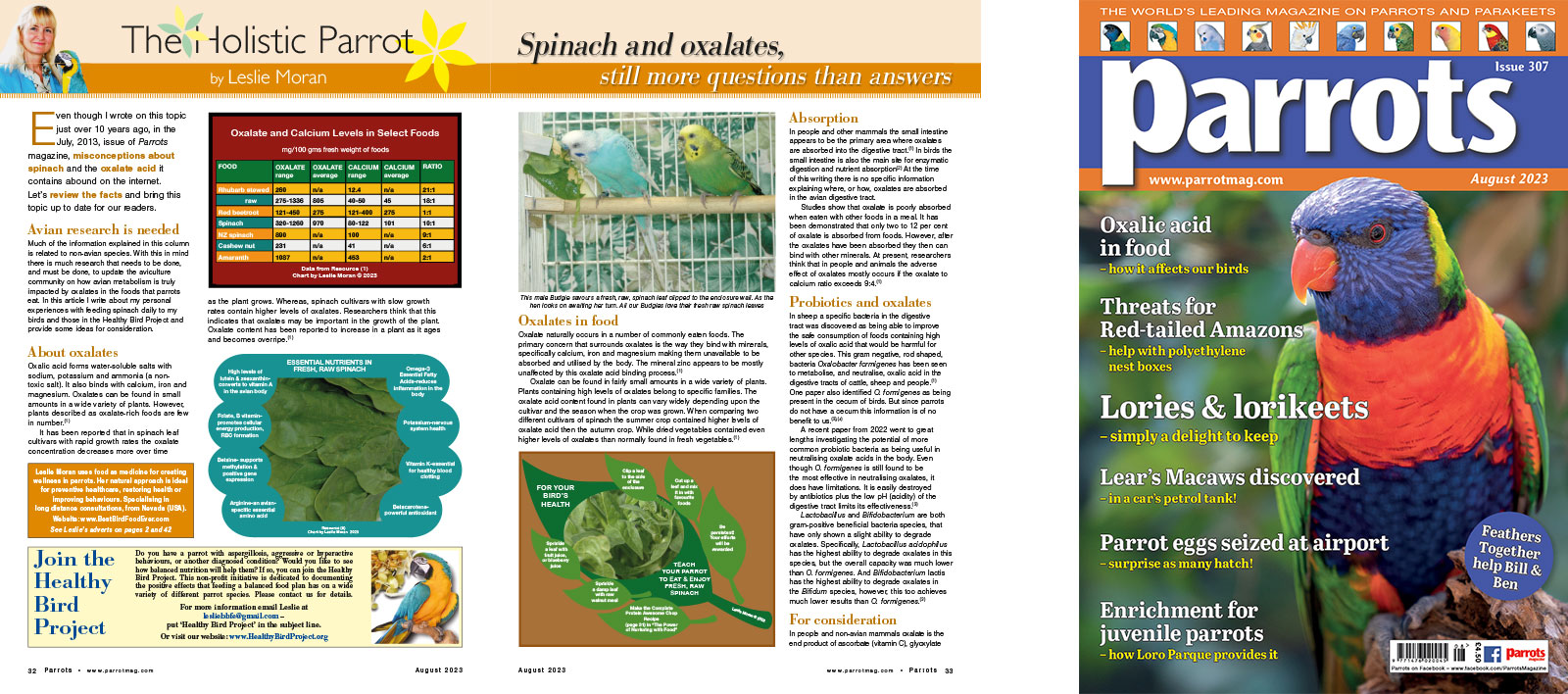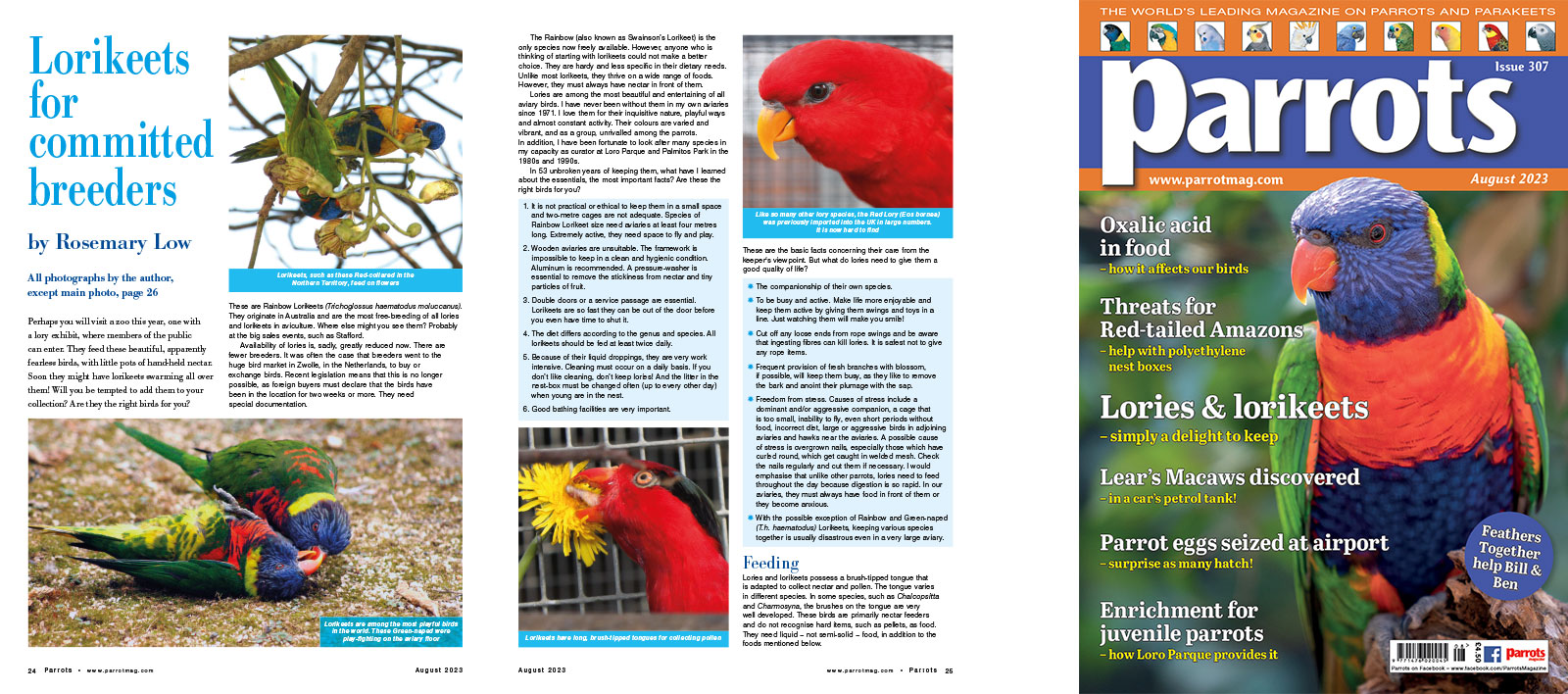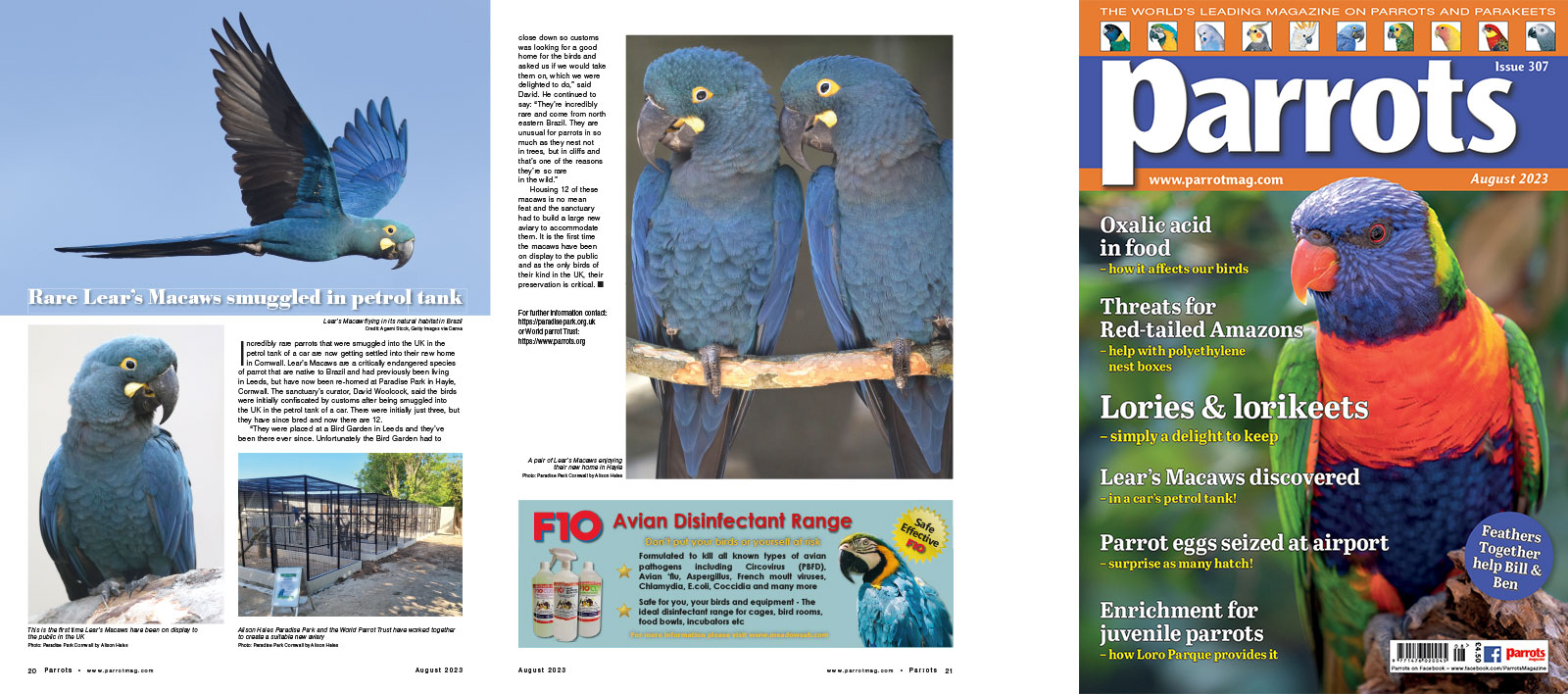
Complete Psittacine by Eb Cravens
We continue last month’s look into parrot escape procedures with another article about emergency measures if and when you have one of your beloved flock out there free and loose!
Nowadays when more owners are being encouraged to take their pet on outings, let it experience a play aviary out in the sunshine, experiment with harnesses and even some controlled free-flight. The chances of a startled psittacine pet flying off and becoming disoriented or lost are increasing. Having a hookbill escape and leave you shouting in the distance can be a frightening experience for the keeper. But with calm resolve and an organised plan of action, the chances of recovering your beloved pet will be very likely. Here is an instance from our days in New Mexico that properly illustrates how we confront just such a challenge.
A four-year-old pet Red-tailed African Grey, was perched on his owner’s shoulder like many times previously for a calm stroll up the country road. Dozens of walks they had taken, and his wings had always been trimmed. Suddenly, for no explainable reason, the Grey bolted and with a furious flapping, flew several hundred yards into a pine woods. There he remained in silence.
Buy Now!

The Holistic Parrot by Leslie Moran
Even though I wrote on this topic just over 10 years ago, in the July, 2013, issue of Parrots magazine, misconceptions about spinach and the oxalate acid it contains abound on the internet. Let’s review the facts and bring this topic up to date for our readers.
Much of the information explained in this column is related to non-avian species. With this in mind there is much research that needs to be done, and must be done, to update the aviculture community on how avian metabolism is truly impacted by oxalates in the foods that parrots eat. In this article I write about my personal experiences with feeding spinach daily to my birds and those in the Healthy Bird Project and provide some ideas for consideration.
Oxalic acid forms water-soluble salts with sodium, potassium and ammonia (a non-toxic salt). It also binds with calcium, iron and magnesium. Oxalates can be found in small amounts in a wide variety of plants. However, plants described as oxalate-rich foods are few in number.
Buy Now!

By Rosemary Low
Perhaps you will visit a zoo this year, one with a lory exhibit, where members of the public can enter. They feed these beautiful, apparently fearless birds, with little pots of hand-held nectar. Soon they might have lorikeets swarming all over them! Will you be tempted to add them to your collection? Are they the right birds for you?
These are Rainbow Lorikeets (Trichoglossus haematodus moluccanus). They originate in Australia and are the most free-breeding of all lories and lorikeets in aviculture. Where else might you see them? Probably at the big sales events, such as Stafford.
Availability of lories is, sadly, greatly reduced now. There are fewer breeders. It was often the case that breeders went to the huge bird market in Zwolle, in the Netherlands, to buy or exchange birds. Recent legislation means that this is no longer possible, as foreign buyers must declare that the birds have been in the location for two weeks or more. They need special documentation.
Buy Now!

Incredibly rare parrots that were smuggled into the UK in the petrol tank of a car are now getting settled into their new home in Cornwall. Lear’s Macaws are a critically endangered species of parrot that are native to Brazil and had previously been living in Leeds, but have now been re-homed at Paradise Park in Hayle, Cornwall. The sanctuary’s curator, David Woolcock, said the birds were initially confiscated by customs after being smuggled into the UK in the petrol tank of a car. There were initially just three, but they have since bred and now there are 12.
“They were placed at a Bird Garden in Leeds and they’ve been there ever since. Unfortunately the Bird Garden had to close down so customs was looking for a good home for the birds and asked us if we would take them on, which we were delighted to do,” said David. He continued to say: “They’re incredibly rare and come from north eastern Brazil. They are unusual for parrots in so much as they nest not in trees, but in cliffs and that’s one of the reasons they’re so rare in the wild.”
Buy Now!




